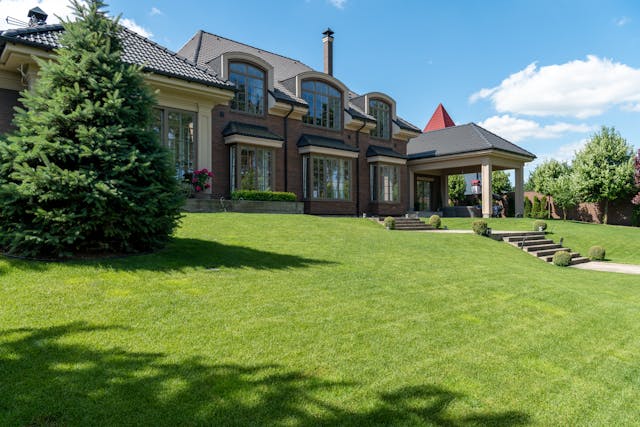
Image Source: Pexels
Homeowners Associations (HOAs) often have strict rules about lawn care and curb appeal to maintain a uniform, attractive look throughout the neighborhood. Some of these rules are common sense, but others may take you by surprise. Of course, every community is different and has its own rules. Make sure to consult with your HOA guidelines or reach out to your board members with questions. Here are 9 common reasons your lawn might be violating HOA rules.
1. Overgrown Grass or Weeds
Most HOAs set limits on how tall your grass can grow. This is just like the rules towns usually put in place. Typically, this is around 6 inches. Unkempt lawns and visible weeds are among the most common violations.
2. Dead or Brown Patches
Brown or dead spots can make your lawn look neglected. HOAs may require consistent watering, fertilizing, and reseeding to maintain a green, healthy lawn. Of course, exceptions may be made during droughts or water bans. But remember that dead yards ruin the appearance of an entire neighborhood.
3. Invasive or Non-Approved Plants
Some associations ban certain invasive species or have approved plant lists. Planting outside these guidelines, even unintentionally, can lead to fines. These invasive plants can spread rapidly and may negatively impact the neighborhood’s ecosystems. Bamboo is one species that may be banned by your HOA.
4. Lack of Edging or Lawn Definition
Sloppy edges where grass meets sidewalks, driveways, or flower beds can violate HOA rules. Many HOAs expect a clean, manicured appearance. This is to improve curb appeal throughout the neighborhood. Additionally, it will preserve home values.
5. Unapproved Lawn Ornaments or Structures
Large statues, fountains, or decorative items might not be allowed, especially if they clash with the community’s aesthetic standards. While this is mainly an aesthetic decision, some decorations can be dangerous. For example, water features and bird baths, especially when not on, can be attractors for mosquitoes. This can be a health risk for the entire community.
6. Excessive Leaves or Debris
Leaving fallen leaves, sticks, or other debris on your lawn for too long can lead to complaints. Regular cleanup is typically required. While some HOAs will help with leaf cleanup, you will probably be responsible for your own yard. In addition, you’ll probably be required to dispose of trash and debris a certain way, so pay attention to HOA rules.
7. Untrimmed Bushes or Hedges
If your landscaping includes hedges or bushes, they often must be kept neatly trimmed. Be sure that they don’t encroach on sidewalks or neighboring properties. Overgrown greenery can also reduce visibility for drivers and pedestrians, creating potential safety hazards. If you want to add or remove bushes or hedges, you’ll probably also need approval.
8. Poor Drainage or Standing Water
Poor drainage, causing soggy spots or standing water, not only damages grass but can also violate rules about property upkeep and mosquito control. Standing water becomes a breeding ground for mosquitoes, increasing the risk of bites and disease. It can also seep into your foundation over time, leading to costly repairs. Homeowners’ associations or local ordinances may issue warnings or fines if the issue isn’t promptly addressed.
9. Lawn Not Matching Community Standards
Some HOAs have strict rules about grass types, color, and uniformity. If your lawn differs drastically in look or care from your neighbors’, it might be considered non-compliant. This is quite common for HOA gardening policies, as well. Landscapes of all homes are usually required to be somewhat similar, so that they don’t clash.
Respecting HOA Lawn Rules
While some of these HOA rules may seem strict, they are meant to protect the value of homes. Additionally, they keep order throughout the community. Most are easy to comply with, as long as you know the rules. If you don’t, beware of fines.
Read More
10 Hidden Dangers Lurking in Your Backyard Mulch
7 Plants That Attract Dangerous Pests without You Realizing It

Teri Monroe started her career in communications working for local government and nonprofits. Today, she is a freelance finance and lifestyle writer and small business owner. In her spare time, she loves golfing with her husband, taking her dog Milo on long walks, and playing pickleball with friends.
Leave a Reply